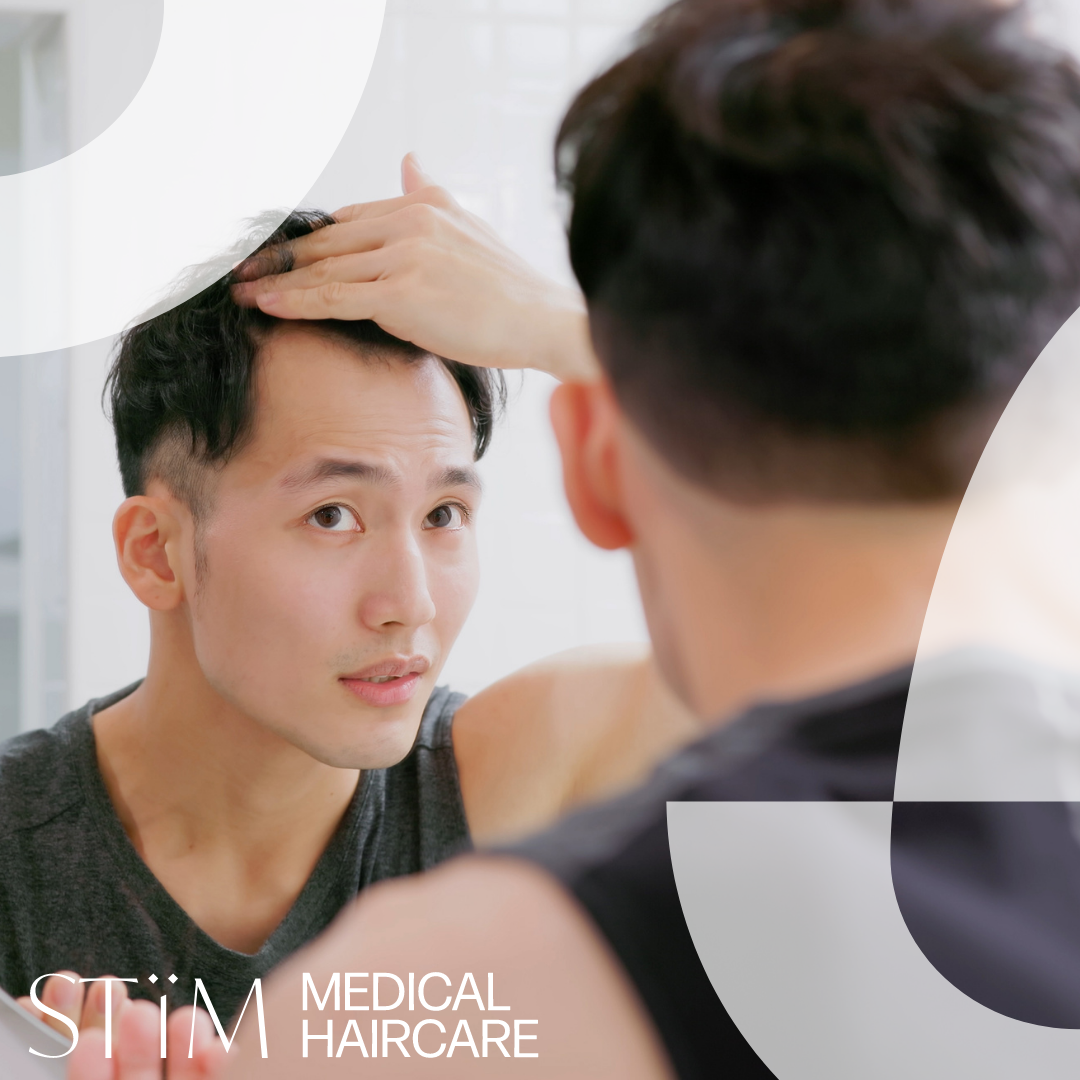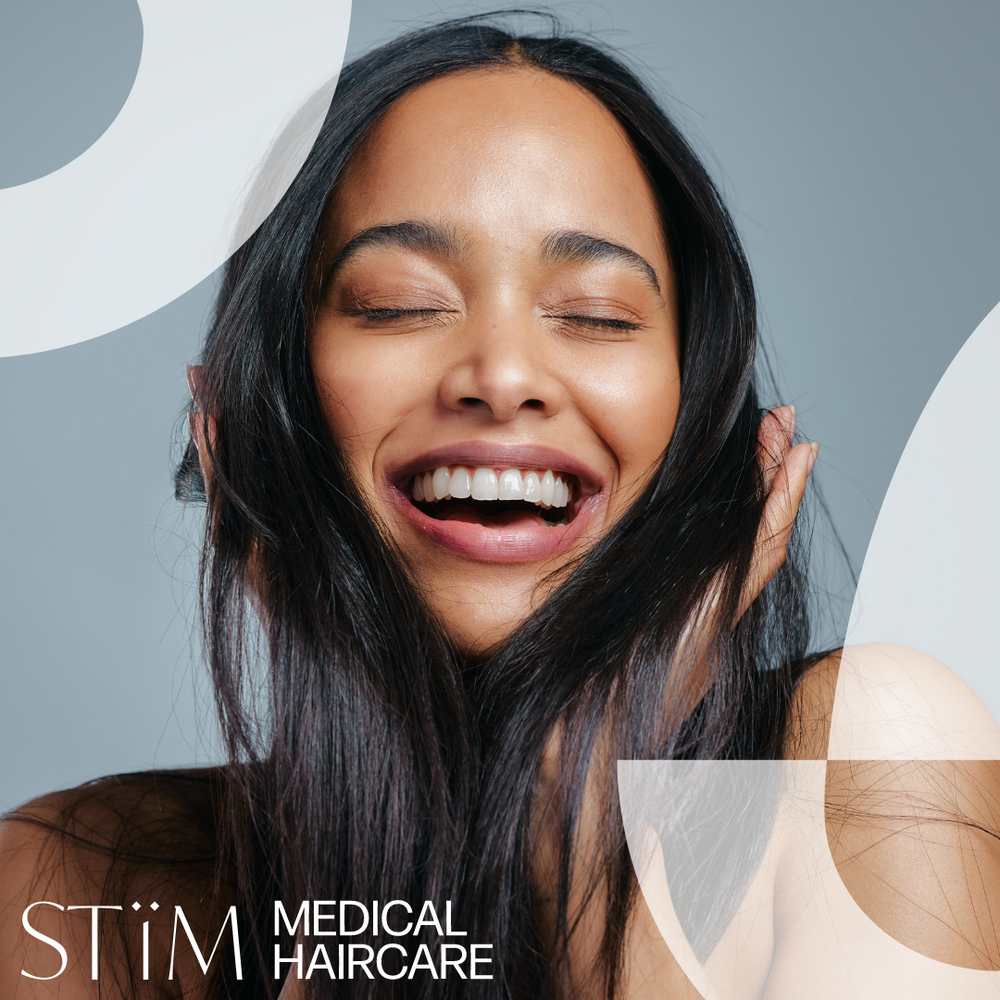Why Is My Hair Falling Out: 8 Causes and How to Stop It

Spotting extra strands on your pillow or in your brush can spark real concern—especially when it starts to feel like your hair is thinning faster than usual. If you’ve found yourself anxiously asking, “Why is my hair falling out?”, you’re certainly not alone. Hair loss is a common experience for Australians of all ages and backgrounds, and while the causes are many, so too are the pathways to restoring your hair’s vitality.
Understanding what’s behind your shedding is the first step towards effective action. Some causes are fleeting—like the hormonal fluctuations after pregnancy—while others, such as hereditary factors, unfold more gradually. The good news? Early recognition and targeted strategies can make all the difference, whether your goal is to halt the loss, encourage regrowth, or simply maintain the fullness you have.
In this article, you’ll discover eight of the most common reasons for hair loss, ranging from genetics and hormones to nutrition, stress and environmental factors. Along the way, we’ll share practical, medically supported advice for protecting your hair and scalp—including when it’s time to seek professional help. Expect clear explanations, trusted resources, and actionable steps you can start today. Let’s unravel the causes and find your best path forward.
1. Genetic Factors: Androgenetic Alopecia
Androgenetic alopecia, often called male- or female-pattern baldness, is the most common form of hereditary hair thinning. In Australia, it affects over 80 percent of men and more than 50 percent of women at some point in their lives. This condition arises because certain hair follicles are genetically sensitive to androgens, particularly dihydrotestosterone (DHT), which shortens the anagen (growth) phase and causes follicles to shrink with each cycle.
DHT interacts with follicular receptors, leading to progressively finer, shorter hairs—a process known as miniaturisation. Men typically notice a receding hairline and thinning at the crown, whereas women tend to experience a diffuse reduction in density across the top of the scalp. Diagnosis is largely clinical: a dermatologist will review family history, assess the pattern of thinning and perform a scalp examination to rule out other causes.
Several treatments can slow or even reverse the miniaturisation process. Topical minoxidil increases blood flow to follicles, extending the growth phase, while oral finasteride inhibits the enzyme 5-alpha reductase to reduce DHT levels. Low-level laser therapy may stimulate follicular activity, and platelet-rich plasma (PRP) injections deliver growth factors directly to the scalp. For those seeking more permanent results, hair transplant surgery relocates healthy follicles to thinning areas.
A practical starting point could be applying 5 percent minoxidil foam twice daily for at least 6–12 months. Consistency is key: skipping applications may delay visible improvements.
1.1 Why Family History Matters
Your likelihood of developing androgenetic alopecia can be estimated from your relatives’ experiences. If one parent shows early thinning, your risk roughly doubles; if both parents or grandparents have significant hair loss, the odds increase further. While the exact inheritance is polygenic, knowing your family pattern helps set realistic expectations and prompts earlier intervention.
1.2 Counselling Expectations and Timeline
It’s important to approach treatment with patience. Most users won’t see noticeable regrowth until six months in, and maximal effect can take up to a year. Maintenance therapy is usually lifelong—stopping minoxidil or finasteride often leads to a return of prior hair loss within a few months. Regular check-ins with your clinician will ensure you’re on the right track and help adjust your plan as needed.
2. Hormonal Changes Disrupting the Hair Growth Cycle
Hormones play a pivotal role in regulating the hair growth cycle. Fluctuations in oestrogen, progesterone, thyroid hormones and androgens can push follicles out of their normal rhythm, leading to more hairs entering the resting (telogen) phase and shedding. In particular, life events that alter hormone levels—like pregnancy, menopause or thyroid dysfunction—often coincide with noticeable thinning.
During pregnancy, high oestrogen levels prolong the growth phase, resulting in thicker, fuller hair. After childbirth, however, oestrogen and progesterone drop sharply. Many new mothers see abrupt shedding three to six months postpartum, a phenomenon known as telogen effluvium. While alarming, this is usually temporary: follicles gradually return to their pre-pregnancy cycle within a year.
Menopause is another time of transition. As ovarian oestrogen production declines, the protective effect on hair diminishes. Women may observe gradual widening of their part or increased volume loss across the crown. This pattern differs from genetic thinning, because it’s tied to an overall shift in hormone balance rather than a family-specific pattern.
Thyroid disorders—both hypo- and hyperthyroidism—can also disrupt hair growth. An underactive thyroid slows cellular processes, causing hair to become brittle and shed more readily. Conversely, an overactive gland may accelerate the growth cycle, leading to fine, sparse regrowth. If you notice diffuse thinning alongside fatigue, weight changes or sensitivity to temperature, ask your GP for blood tests including TSH, T3 and T4 levels.
Most hormone-related hair losses resolve once levels stabilise or underlying conditions are treated. In the case of postpartum shedding, simple measures can help maintain volume: choose a volumising shampoo, apply conditioner to the mid-lengths and ends only, and avoid heavy styling products. For thyroid-linked loss, initiating medication often brings improvements in six to twelve months; until then, gentle hair care and nutritional support can lessen breakage.
2.1 Postpartum Hair Loss: Temporary Shedding
After delivery, the sudden fall in oestrogen forces a large cohort of hair follicles into telogen. Around 50–150 hairs a day may shed—far above the usual 50–100—leaving noticeable clumps on your brush or in the shower drain. Remember this phase peaks at three to six months and typically resolves by twelve months. In the meantime, minimise mechanical stress by using a wide-tooth comb, drying hair on a low setting and opting for looser styles.
2.2 Thyroid-Related Hair Loss: What to Expect
Thyroid hormones influence every rapidly dividing cell, including those in hair follicles. Hypothyroidism often causes hair to feel coarse and to fall out in thin, diffuse patches, while hyperthyroidism can make hair soft but sparse. Other signs may include dry skin, brittle nails, weight fluctuations and fatigue. Once you start appropriate thyroid replacement or antithyroid therapy, expect gradual hair regrowth over six to twelve months—often slower than in other forms of shedding. In the interim, maintain a balanced diet rich in iodine, selenium and zinc, and discuss scalp-stimulating supplements with your healthcare provider.
3. Stress-Induced Hair Shedding: Telogen Effluvium
Telogen effluvium (TE) occurs when a significant number of hair follicles shift prematurely into the resting (telogen) phase, resulting in diffuse shedding. Normally, about 10–15 percent of scalp hairs are in telogen, but in TE this can rise above 25 percent. The International Society of Hair Restoration Surgery describes TE as a reactive process rather than a permanent disorder, with regrowth expected once the underlying trigger is addressed.
Common causes of TE fall into two categories:
- Physical stressors: major surgery, high fever, chronic illness or rapid weight loss.
- Emotional stressors: bereavement, workplace pressure or sudden life changes.
Diagnosis often begins with a pull test, where gently tugging on a bundle of 20–60 hairs yields more than 6 hairs (10 percent) in telogen, raising suspicion of TE. A trichogram—microscopic evaluation of plucked hairs—confirms the diagnosis if over a quarter display telogen roots. Scalp examination rules out other forms of loss.
The good news is that TE is usually self-limiting. Once the stressor is removed or managed, hair typically begins to regrow within three to six months. In the interim, supporting the scalp and reducing further breakage can ease the transition back to a normal growth cycle.
3.1 Identifying Stress as the Culprit
Red flags for TE include:
- A sudden increase in hair shed: noticeable clumps in the shower or on your brush.
- Diffuse thinning rather than defined patches.
- Onset within two to three months of a major life event—surgery, serious illness or emotional trauma.
If you tick these boxes, TE is a likely diagnosis. Keeping a hair-shed diary can help you and your clinician spot patterns and timelines.
3.2 Stress Management to Support Regrowth
Reducing stress not only benefits your wellbeing but directly supports hair regrowth:
- Mindful breathing: five minutes twice daily to calm the nervous system.
- Gentle exercise: aim for 30 minutes of walking or swimming most days.
- Yoga or meditation: one or two classes per week to build resilience.
- Scalp massage: a daily two-minute routine to stimulate circulation.
- Nutrient-rich diet: incorporate fresh fruit, vegetables and lean protein.
Sample weekly plan:
- Monday & Thursday evening: 60 minutes of gentle yoga, followed by a scalp massage.
- Tuesday & Saturday morning: 30 minutes brisk walk, plus five minutes of breathing exercises.
- Daily: use a lightweight, strengthening shampoo and conditioner to reduce breakage.
By pairing stress-busting practices with a gentle hair-care routine, you set the stage for your follicles to re-enter the growth phase with minimal interruption.
4. Nutritional Deficiencies Weakening Hair Structure
Hair follicles are among the most rapidly dividing cells in the body, relying on a steady supply of nutrients to drive cell division and keratin synthesis. When key vitamins and minerals are lacking, the hair growth cycle can stall, strands become brittle, and shedding increases. Understanding which nutrients play a vital role—and how to restore them—can help shore up your hair’s foundation from within.
Iron is essential for the enzyme ribonucleotide reductase, which supports DNA replication in growing hair cells. Low iron levels often manifest as diffuse thinning, scalp pallor and increased breakage. B-vitamins—especially biotin, riboflavin, folate and B12—are crucial cofactors in energy production and keratin formation. Inadequate protein or essential fatty acids likewise disrupts the building blocks of hair fibre, leaving shafts weak and prone to snapping.
Daily nutrient targets vary by age and sex, but you can find recommended intake values for iron on Eat for Health. In general:
- Iron: Lean red meat, chicken liver, legumes and fortified cereals
- Biotin: Eggs, almonds, sunflower seeds and sweet potato
- Riboflavin (B2) & Folate: Greens, dairy products, beans and whole grains
- Vitamin B12: Clams, beef, eggs or fortified plant milks
- Protein & Healthy Fats: Fish, legumes, avocado and nuts
If your diet falls short, your GP or a dietitian may recommend blood tests—ferritin, full blood count, B12 and folate levels—to confirm any deficiencies. Supplementation should be guided by results; megadoses without professional oversight can cause imbalances of their own.
Sample Weekly Meal Plan Rich in Iron and B-Vitamins
- Monday: Spinach and mushroom omelette; grilled chicken and quinoa salad
- Tuesday: Beef and bean chilli with brown rice; steamed broccoli
- Wednesday: Salmon fillet with roasted sweet potato and kale
- Thursday: Chickpea and lentil curry; side of fortified whole-grain bread
- Friday: Tuna and avocado wrap; mixed-leaf salad with sunflower seeds
- Saturday: Beef stir-fry with capsicum, snow peas and brown rice
- Sunday: Baked eggs in tomato sauce (shakshuka); side of sautéed greens
4.1 Checking for Deficiencies
If you suspect a nutrient gap, start with simple blood tests. A low ferritin level (storage form of iron) often precedes anaemia and is a red flag for hair thinning. Likewise, insufficient B12 or folate can present as fatigue and brittle hair. Discuss results with your healthcare provider, who can tailor a supplement plan based on your individual needs.
4.2 Food-First Approach and Safe Supplementation
Aim to meet most of your requirements through wholefoods, since nutrients in food work synergistically and carry fewer risks than high-dose pills. If supplements are needed, choose a reputable brand at doses close to the recommended daily intake. Always avoid extreme “hair-growth blends” promising sky-high amounts; instead, seek professional advice before adding anything beyond basic multivitamins or targeted iron/B-complex tablets.
5. Underlying Medical Conditions Causing Hair Loss
Occasionally, hair loss stems from medical issues that directly damage follicles or disrupt the scalp environment. Autoimmune conditions, fungal infections and systemic diseases can all lead to noticeable thinning or patchy bald spots. Spotting the tell-tale signs early, and seeking the right tests, often means faster relief and a lower risk of permanent damage.
Autoimmune disorders such as alopecia areata occur when the immune system mistakenly attacks hair follicles, producing round, smooth patches of baldness. You might also notice tiny dents or pitting in your fingernails—a helpful clue that your body’s defence mechanisms have gone off-target. Infections like tinea capitis (ringworm of the scalp) present differently: look for scaly, inflamed rings, broken hairs that snap off near the scalp, and persistent itching or redness. Beyond these, systemic illnesses such as lupus, diabetes or severe eczema can trigger diffuse shedding or inflamed, scaly patches that compromise follicle health.
Diagnosis often combines clinical examination with targeted tests. A dermatologist or trichologist may take a scalp swab or perform a biopsy to identify fungal elements or inflammatory changes. Blood panels can reveal underlying autoimmune markers—antibodies, complement levels or hormone imbalances—that point to diseases like lupus or thyroid dysfunction. Accurate identification of the culprit is crucial, since treatment strategies differ significantly between conditions.
Management depends on the root cause. For alopecia areata, corticosteroid injections into the scalp often calm the immune attack, while newer immunotherapies aim to rebalance immune signalling. Ringworm typically responds to oral or topical antifungal agents over several weeks, alongside gentle medicated shampoos to clear residual spores. Systemic diseases require a holistic approach—working with a specialist to control the primary ailment often brings hair regrowth as a welcome side effect. Throughout treatment, maintaining scalp hygiene and avoiding harsh styling will reduce further irritation and give follicles the best chance to recover.
5.1 Autoimmune Hair Loss: Alopecia Areata
Alopecia areata arises when white blood cells infiltrate hair bulbs, stalling growth and triggering sudden patchy hair loss. These bald spots are usually well-defined and may spread or coalesce if left unchecked. Nail changes—pitting, ridging or brittle texture—often accompany this condition and can help confirm the diagnosis. Treatment options range from intralesional steroid injections to emerging JAK-inhibitor therapies, which target specific immune pathways. Early intervention can shorten flare-ups and encourage regrowth, so consult a dermatologist at the first sign of circular bald patches.
5.2 Scalp Infections and Inflammation
Fungal or bacterial invasion of the scalp can inflame follicles, weaken hair shafts and cause localised shedding. Tinea capitis, for example, appears as scaly, ring-shaped lesions with broken stubs of hair inside. Bacterial folliculitis may produce small pustules or clusters of itchy bumps around individual hairs. Diagnosis typically involves a KOH or fungal culture for ringworm, or a bacterial swab for folliculitis. Treatment combines antifungal or antibiotic courses with medicated shampoos containing ketoconazole or selenium sulphide. Regularly cleansing and avoiding occlusive headwear helps keep spores and bacteria at bay, reducing recurrence risk.
6. Unhealthy Lifestyle Habits Accelerating Hair Fall
Everyday choices—from smoking and drinking to the way you style your locks—can add up and undermine hair health. Nicotine causes blood vessels to constrict, cutting off precious oxygen and nutrients to hair follicles. Meanwhile, excess alcohol dehydrates the body and impairs absorption of vitamins like zinc and B-complex, which are vital for strong, resilient strands. Over time, these habits can tip the balance towards weakened shafts and increased shedding.
The tools and techniques we use on our hair also play a part. Frequent heat styling—think daily blow-dries, straighteners and curling irons—breaks down the hair’s protein structure, leaving fibres brittle and prone to snap. Chemical treatments such as bleaching, perming and harsh dyes strip natural oils and lift the cuticle, causing further damage. Coupled with tight hairstyles like ponytails, braids or extensions that tug at the hairline, this cocktail can lead to traction alopecia and visible thinning around the temples and nape.
The good news is that many of these factors are under your control. By adopting gentler styling routines, choosing kinder products and moderating smoking or alcohol intake, you can dramatically slow down hair fall. Below are simple yet effective steps to protect your follicles and give your mane the break it needs.
6.1 Smoking and Alcohol Reduction for Hair Health
Cutting down on cigarettes and drinks doesn’t just boost overall wellbeing—it refreshes your scalp, too. Try these strategies:
- Set realistic goals: reduce by one cigarette or alcoholic drink a day until you reach zero or a healthier level.
- Stay hydrated: aim for at least two litres of water daily to counteract any residual dehydration.
- Replace with healthier rituals: swap an evening tipple for herbal tea, or take a brisk walk instead of a smoke break.
- Seek support: apps, hotlines or a friend can help you stay accountable and manage cravings.
Over time, improved circulation from quitting smoking and consistent hydration will revive dormant follicles and make your hair more receptive to growth-boosting nutrients.
6.2 Gentle Styling Habits to Minimise Breakage
Treat your hair like fine china—handle with care. Implement these habits to reduce mechanical stress:
- Limit heat styling to two or three sessions per week; always use a heat-protectant spray beforehand.
- Choose sulphate-free and paraben-free shampoos to preserve natural oils and prevent cuticle damage.
- Air-dry whenever possible, or use the lowest heat setting on your dryer while keeping it at least 15 cm from your hair.
- Alternate loose, protective styles like low buns or soft braids; avoid elastic bands that grip too tightly.
- Use a wide-tooth comb or a brush with flexible bristles, starting from the ends and gently working your way up.
By incorporating these small adjustments into your routine, you’ll see fewer split ends, reduced breakage and a gradual return to stronger, more vibrant hair.
7. Ageing: Natural Decline in Hair Growth
As the years pass, our hair’s natural growth cycle begins to change. The anagen (growth) phase shortens, while more follicles enter the telogen (resting) stage, producing thinner, shorter hairs. Simultaneously, overall follicle density decreases: by age 35, over 60 percent of men and around 40 percent of women notice visible thinning, and by age 55 more than 85 percent of men are affected. Alongside reduced quantity, hair often takes on a greyer, coarser texture, making it look sparse even when strand count remains substantial.
These age-related shifts are entirely normal but can still dent confidence. Fortunately, adopting targeted care and styling strategies helps mitigate the impact. Volumising and thickening products add body to fragile strands, while gentle scalp stimulation encourages circulation to sleepy follicles. Below, we explore how ageing alters your hair cycle and practical steps to preserve the illusion of fuller, more youthful hair.
7.1 Understanding the Hair Growth Cycle Shift
A healthy hair follicle follows a three-stage cycle:
- Anagen (growth): lasts two to six years in youth, gradually shortening with age.
- Catagen (transition): a brief period where growth stops and the follicle shrinks.
- Telogen (resting): lasts around three months before the hair sheds and the cycle restarts.
With ageing, fewer follicles remain in a prolonged anagen phase, so new hairs grow back more slowly and at a reduced diameter. This shift not only reduces volume but can increase the proportion of fine, “vellus-like” hairs on the scalp. Recognising these changes as part of the natural lifecycle sets realistic expectations and guides you towards supportive care rather than aggressive interventions.
7.2 Enhancing Appearance of Fullness
While you can’t halt chronological ageing, you can bolster your hair’s appearance. A simple, consistent routine could look like this:
- Weekly Scalp Massage: Use a few drops of jojoba or sweet almond oil. Massage gently in circular motions for five minutes to boost blood flow and relax the scalp.
- Daily Volumising Mousse: Apply a pea-sized amount to towel-dried hair, focusing at the roots before blow-drying on low heat. This creates lift without weighing hair down.
- Volumising Shampoo and Conditioner: Choose a lightweight, sulfate-free formula designed to coat and plump each strand. Alternate with a gentle clarifying wash once a week to remove mineral or product buildup.
Additional tips: sleep on a silk pillowcase to reduce friction, avoid heavy conditioners near the roots, and opt for haircuts with layers to introduce natural movement. By pairing an understanding of the ageing cycle with targeted styling and nourishment, you’ll maintain a fuller-looking mane well into your later decades.
8. Environmental Damage to Hair and Scalp Health
Your hair and scalp face a daily barrage of environmental stressors—UV radiation, airborne pollutants and mineral-laden water can all take their toll. Ultraviolet rays break down the protein structure of hair, leading to dryness, brittleness and colour fading. At the same time, pollution deposits tiny particles and free radicals on the scalp, irritating follicles and contributing to oxidative stress. Even the water you rinse with can be a culprit: hard water minerals like calcium and magnesium build up on the hair shaft, dulling its shine and making strands more prone to breakage.
Protecting your mane means adopting simple, consistent habits. Covering up against sun exposure and removing environmental grime helps maintain both scalp health and hair resilience. Below are key measures to consider:
- Wear UV-protective hats or scarves when you’re outdoors for extended periods.
- Spritz a leave-in spray or serum with antioxidants (like vitamin E or green tea extract) before heading into the sun.
- Use a chelating or clarifying shampoo once a week to strip away pollutants and mineral deposits.
- In areas with hard water, install a shower filter or use a bottled “filtered” rinse to prevent scale buildup.
Sample checklist for environmental defence:
- Daily: broad-brimmed hat and a few sprays of UV-protectant leave-in.
- Weekly: clarifying shampoo or scalp detox treatment.
- Quarterly: inspect and replace your shower filter cartridge (if you use one).
8.1 Shielding Hair from Sun and Pollution
A simple hat can be your best line of defence against UV-induced damage. Choose a wide-brimmed style that shades your hairline and part. When a hat isn’t practical, opt for a leave-in product containing antioxidants—such as vitamin C, E or green tea polyphenols—to neutralise free radicals on contact. Reapply every few hours if you’re in strong sunlight or heavy traffic, and always rinse pollutants out at the end of the day to prevent follicle irritation.
8.2 Water Quality and Scalp Cleansing
Hard water leaves a noticeable film on hair, making it feel rough and look lifeless. A clarifying shampoo with ingredients like EDTA or citric acid can dissolve these mineral deposits—use it no more than once weekly to avoid over-stripping. For an at-home boost, try a diluted apple-cider vinegar rinse (one tablespoon in a litre of water) after shampooing; it helps balance scalp pH and break down residual buildup. If your tap water is especially hard, a simple shower-head filter will transform every wash into a soft-water treatment, giving your hair a smoother, shinier finish.
9. How to Prevent Hair Loss and Protect Your Scalp
While not every cause of shedding is avoidable, you can significantly reduce hair fall and boost scalp health by combining good nutrition, stress management and supportive daily habits. The Cleveland Clinic recommends several key strategies to help you stop the constant droves of hair leaving your brush (Source: Cleveland Clinic):
- Eat a balanced diet: Ensure you’re getting enough calories, protein, iron and vitamins to support hair follicles.
- Manage stress: Regular meditation, exercise or talking therapies can calm the nervous system and prevent telogen effluvium.
- Address medical conditions: Monitor thyroid function, scalp disorders or other health issues with your GP.
- Avoid tight hairstyles: Give your hairline a break from high-tension ponytails, braids or extensions.
- Consider a cooling cap: If you’re undergoing chemotherapy, scalp cooling can reduce hair loss.
Building on these pillars, a structured daily routine can make all the difference.
Daily Care Routine Checklist:
- Shampoo gently 2–3 times a week with a mild, sulphate-free formula.
- Massage your scalp for 2–3 minutes each wash to stimulate blood flow.
- Sleep on a silk or satin pillowcase to minimise friction and breakage.
- Perform a weekly hair-shed check: count fallen hairs after brushing and note any sudden spikes.
9.1 Building a Scalp-Healthy Routine
A healthy scalp is the launchpad for strong hair. Consistent cleansing removes sebum and debris without stripping natural oils—aim for a gentle, pH-balanced shampoo suited to your hair type. Once a week, introduce a mild exfoliant or clarifying treatment to slough off dead skin cells and product buildup. Follow up with a lightweight conditioner, focusing on mid-lengths and ends to avoid weighing down the roots. For extra nourishment, apply a leave-in scalp tonic or serum containing botanical extracts, peptides or niacinamide to boost moisture and barrier function.
9.2 When to Incorporate Professional Treatments
If your self-care routine plateaus or you’re dealing with significant thinning, professional interventions can offer targeted support. Over-the-counter serums with proven actives—like minoxidil or encapsulated nutrients—can be a first step. Low-level laser therapy devices are available for home use and may enhance circulation to stubborn follicles. In-clinic options such as platelet-rich plasma (PRP) therapy or microneedling deliver growth factors and encourage collagen production. Before you invest, consult a trichologist or dermatologist who can assess your scalp health, recommend the most suitable therapy and monitor your progress over time.
10. When to Seek Professional Help for Hair Loss
Knowing when to call in the experts can save time, worry and—most importantly—hair. If you’ve implemented lifestyle tweaks, nutritional support and gentle hair care without seeing improvement, or if you notice any alarming signs, it’s wise to book an appointment sooner rather than later.
Key red flags include:
- Sudden or patchy loss: A few isolated bald spots or rapid thinning in a defined area could signal alopecia areata, infection or scarring conditions.
- Persistent heavy shedding: Losing more than 100 hairs per day for several weeks may indicate telogen effluvium or an underlying systemic issue.
- Scalp inflammation: Pain, itchiness, redness or scaling often accompany fungal, bacterial or autoimmune disorders that need targeted treatment.
When these signs emerge, a specialist can pinpoint the root cause and tailor an effective plan. Common professionals include:
- Dermatologists: Experts in skin and scalp disorders who can order blood work, perform scalp biopsies and prescribe systemic or topical therapies.
- Trichologists: Hair and scalp specialists focused on non-medical interventions and advanced hair-strengthening regimens.
- Hair Restoration Surgeons: Clinicians skilled in surgical options such as follicular unit extraction (FUE) or follicular unit transplantation (FUT).
Diagnostic tests may encompass:
- Detailed blood panels (hormone levels, ferritin, autoimmune markers).
- Scalp biopsy to assess follicular health and identify scarring or inflammatory patterns.
- Digital trichoscopy or advanced imaging to quantify miniaturisation and hair density.
Once a diagnosis is confirmed, treatment could involve:
- Prescription medications like spironolactone (for women), finasteride (for men) or compounded minoxidil in higher concentrations.
- Procedural therapies such as platelet-rich plasma (PRP), microneedling or low-level laser therapy to jump-start dormant follicles.
- Surgical solutions for those seeking more permanent restoration.
Stim Haircare makes professional support accessible from home. Start with a free online hair loss quiz to assess your situation, then book an online consultation for prescription-strength treatments. Backed by Nano™ T-Growth Technology, our cosmeceutical products bridge the gap between science and nature to strengthen follicles, nourish the scalp and help restore density.
10.1 What to Prepare for Your Consultation
Maximise the value of your appointment by coming prepared:
- Medical history notes: List any recent illnesses, surgeries, medication changes or family history of hair loss.
- Symptom timeline: Document when you first noticed shedding, any triggers (stress, childbirth, weight loss) and whether hair fall is continuous or episodic.
- Photographs: Take clear, well-lit images of your scalp from multiple angles to show areas of thinning or patchiness.
- Questions: Jot down queries about expected timelines, side effects of treatments and follow-up schedules to ensure you cover all concerns.
10.2 Understanding Your Treatment Plan Options
A comprehensive plan often combines multiple approaches:
- Lifestyle adjustments: Continue nutrient-dense eating, stress management and gentle hair-care habits to support any medical therapy.
- Topical agents: Minoxidil, peptide serums and botanical scalp tonics can maintain a healthy growth environment.
- Oral medications: Finasteride, spironolactone or low-dose dutasteride may be prescribed depending on your diagnosis and risk profile.
- In-clinic procedures: PRP injections, microneedling or laser therapy can be scheduled at intervals to amplify results.
- Surgical options: Hair transplants remain the gold standard for permanent restoration in suitable candidates.
Your specialist will tailor the mix of these elements to fit your goals, timeline and lifestyle. Regular reviews—every three to six months—allow your plan to evolve as your hair responds, ensuring you stay on track toward a fuller, healthier mane.
Wrapping Up: Regain Confidence and Healthy Hair
Hair loss can feel overwhelming, but understanding the eight key drivers—from genetic sensitivity and hormonal shifts to stress, nutrition gaps, underlying health conditions, lifestyle habits, natural ageing and environmental damage—puts you back in control. Each factor plays its part in your hair’s growth cycle, and tackling them together offers the best chance of halting shed hairs and boosting regrowth.
The most effective hair-care strategy combines everyday habits with targeted interventions. A nutrient-rich diet, gentle styling and stress management lay the groundwork for healthier strands, while a scalp-focused routine—regular massage, clarifying cleanses and UV protection—keeps your follicles in prime condition. When lifestyle tweaks aren’t enough, professional treatments such as topical or oral therapies, laser caps, PRP injections or hair transplantation can reinforce your results, tailored to your unique needs.
Acting early is crucial. Spotting thinning or increased shed hairs at the first sign means you can address reversible causes—like postpartum telogen effluvium or thyroid-related loss—before they become more entrenched. Even hereditary and age-related changes respond better when paired with modern cosmeceuticals and clinically proven prescriptions. Consistency, patience and ongoing support from a trichologist or dermatologist will guide you towards lasting improvement.
Ready to take the first step? Head to the Stim Haircare homepage and try our free hair loss quiz. You’ll receive a personalised assessment and a plan that blends our Nano™ T-Growth Technology products with prescription-strength treatments. Let’s rebuild your hair, restore your confidence and enjoy a fuller, healthier mane.








